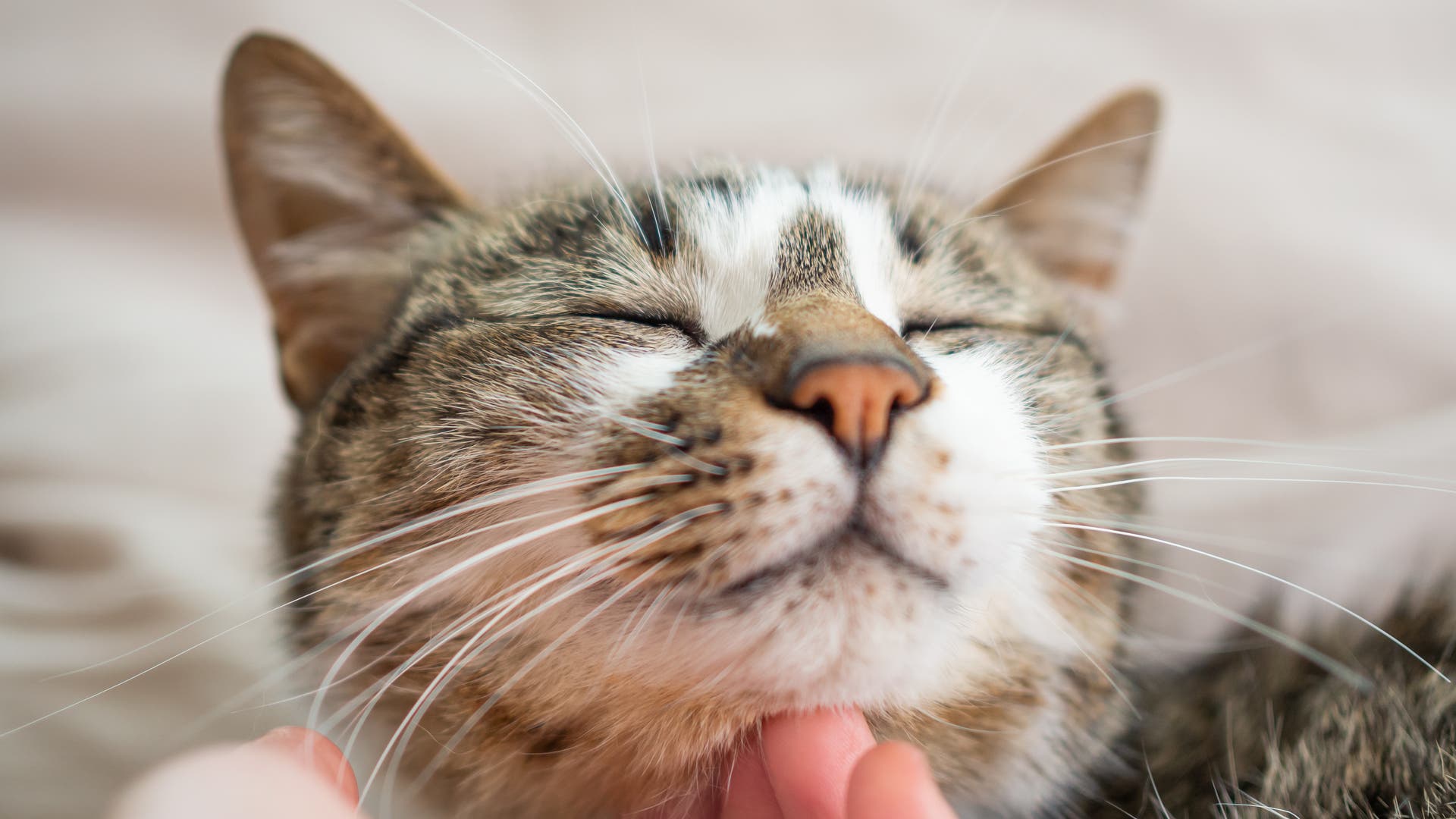Voices of animals: Why can cats purr deeply?
Cats are actually too small to make bass-like purring sounds. Why can they still do that? This is thanks to a special fabric filling, as the researchers discovered. In doing so, they question an ancient thesis.
© Corinne/Getty Images/iStock (details)
Cats especially love having their necks scratched. Then they usually purr too. A group of researchers has now investigated how the buzzing noise occurs.
They have been rubbing people’s legs for thousands of years and expressing their well-being with a soothing purr. There shouldn’t be so many secrets around cats anymore, but the opposite is true. For example, it seems that why domestic cats purr so deeply is not clearly understood. In experiments, researchers led by Christian Herbst of the University of Vienna cast doubt on the long-favored theory. In the journal “Current Biology” The team explains that there are pads of tissue embedded in cats’ vocal folds that help the animals produce a deep purring sound. To do this, cats would not have to constantly exercise their laryngeal muscles, as previously assumed.
Cat purring is unusual in many ways. This is mainly because the animals are actually very small and their vocal cords are too short for such deep sounds – vibrating sounds have a frequency of 20 to 30 Hz. These form the vocal tract in the larynx. It consists of the two vocal cords, which vibrate with the air and can produce different tones through the action of the muscles. In order to track down the deep purring sounds of cats, Herbst and his team examined the vocal tracts of eight cats. (Felice sylvestris catus). The pets were euthanized for health reasons, and their owners agreed to let Viennese experts use the animals for experiments.
Does a persistent nerve signal cause purring?
In the 1970s, researchers developed a theory about how purring occurs in the larynx: through periodic contraction and relaxation of the muscles. To do this, cats’ brains constantly send a nerve signal. Herbst and his group have now tested this theory. They passed air through the removed portions of the larynx of domestic cats and found that a purring sound could be produced — even without neural input, because the larynx exists “ex vivo,” that is, outside the organism.
There is an anatomical peculiarity that enables cats to play deep bass, as the research group explained in their study: vocalization is supported by tissue pads about four millimeters thick that are located in the vocal folds. Its existence has been known for a long time, but its function was not previously clear.
This means that the animals would not use a special form of vocalization to purr deeply, but instead would produce such sounds in a completely natural way – that is, according to the theory of elastic aerodynamics, according to which no nerve signal is sent for each purr. Vibration of the vocal cords. This is how speech normally works in the organism’s larynx. However, Herbst and his team admit that their experiments cannot completely disprove the old theory, and perhaps they do not want to. The reason for the angry purring may be a combination: cats directly control the sound, but they also allow their vocal folds to flutter permanently without further muscle contractions and nerve impulses.
Please allow Javascript to maintain the full functionality of Spektrum.de.

“Alcohol buff. Troublemaker. Introvert. Student. Social media lover. Web ninja. Bacon fan. Reader.”






More Stories
Hits are gaining popularity in science | NDR.de – Culture
Skin rash after eating asparagus? What could be behind it?
Conjunction of the Moon and Mars